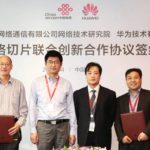Smart Design 2.0 by Wendy’s Promotes Energy Efficiency and Reduces Development Costs
The Wendy’s Company unveiled a 2020 goal of opening more than 600 new restaurants across the globe. As part of its efforts to grow and differentiate the brand whilst keeping energy stewardship at the forefront, Wendy’s recently unveiled a new “Smart Family of Designs,” providing a portfolio of development options to franchisees, including buildings that fit into smaller footprints.
These designs provide more access to real estate, the ability to customise needs for specific trade areas and reduces the development investment for franchisees looking to build new restaurants.
“We continue to look for ways to make the economics better for new development in high potential markets.
“Additionally, our new restaurant designs enhance our commitments to reduce energy usage across the company’s system. Energy conservation makes good business sense and it reflects the responsibility we have to be a good neighbour,” said Abigail Pringle, Chief Development Officer for The Wendy’s Company.
The company recently introduced the Smart 2.0 design, which reduces environmental impact with an even smaller footprint and features that promote energy efficiency, whilst targeting an additional US$150,000/£107,585 of savings in development costs.
This next generation of Smart designs, which were first introduced in 2017, complements the company’s commitment to reduce the amount of energy used in company-owned and operated restaurants by 20% by 2025, as part of its participation in the Department of Energy’s Better Buildings Challenge.
The Smart design prototype features outdoor patio furniture made from recycled materials and exterior and interior LED lighting that provides better quality lighting whilst lowering energy use.
In fact, LED lights and fixtures account for a 70% drop in energy usage versus using the traditional florescent tube lighting.
Kitchens are outfitted with ENERGY STAR certified equipment, including fryers and high efficiency HVAC systems with options for refrigerators, ice cube compressors, and other equipment.
Combined, these items cut down on restaurant energy consumption and CO2 emissions. A kiosk-centric ordering process also eliminates the need for interior menu boards.



Average Rating